Best Pole Saws for the Money 2024
- February 16, 2024
- 0 comment
In 2024, homeowners, landscapers, and outdoor enthusiasts are looking for the best tools to maintain their green spaces efficiently and effectively. Pole saws are indispensable for trimming high branches without the need for a ladder, offering safety and convenience. This article reviews some of the top pole saws available, considering their performance, price, and features to help you make an informed decision.
List of the Best Pole Saws:
- Worx Corded Electric Pole Saw
- Sun Joe Convertible Pole Chainsaw
- DEWALT Pole Saw
- Worx 20V Power Share 8-Inch Pole Saw
- Fiskars Extendable Tree Pruner and Pole Saw
- Hooyman Extendable Pole Saw
What is a Pole Saw?
A pole saw is a type of saw attached to the end of a long pole, designed primarily for pruning trees and cutting branches without the need for a ladder. It enables users to trim branches from the ground, enhancing safety and convenience in garden and landscape maintenance. Pole saws can be manual, electric (corded or battery-powered), or gas-powered, each with specific advantages depending on the task’s requirements. This tool is essential for maintaining trees, managing overgrowth, and ensuring clean cuts in hard-to-reach places, making it a valuable asset for both professional landscapers and homeowners.
1. Worx WG309 Corded Electric Pole Saw – Best Corded
The Worx Corded Electric Pole Saw stands out for its blend of power and ease of use. Priced at $119.99, it offers a 10-inch blade on a detachable head, transforming into a convenient electric chainsaw for smaller, hard-to-reach projects. Its eight-foot extension pole allows for cutting branches up to 10 feet high, enhanced by an automatic chain tightening system for safety and efficiency. While it’s celebrated for its nonstop power and a rotating handle that enables angled cuts, it’s somewhat less powerful than gas models and has a heavy head, which might affect maneuverability for some users.
Pros
- Offers nonstop power for extensive yard work without worrying about battery life, making it ideal for tackling large projects.
- The detachable head doubles as an electric chainsaw, offering versatility for various projects around the home.
Cons
- Being corded limits the range of movement, potentially requiring extension cords to reach distant branches.
- Its 8 amps of power might fall short for those needing to cut through particularly thick or dense branches.
2. Sun Joe SWJ806E Convertible Pole Chainsaw – Most Versatile
For those seeking versatility without breaking the bank, the Sun Joe Convertible Pole Chainsaw is an attractive option at $129.44. This corded pole saw features a telescoping handle that adjusts to provide up to 15 feet of overhead reach. It’s notably lightweight and can be converted into a handheld chainsaw, adding to its utility. Despite its appealing features, its dependency on a nearby outlet and some customer complaints about oil leakage are drawbacks. However, its affordability and performance for cutting through thick branches are frequently highlighted as positives.
Pros
- Converts into a handheld chainsaw, providing two tools in one for different types of cutting tasks.
- Priced at $99, it’s an affordable option that still offers significant reach and power for most home yard maintenance needs.
Cons
- The need for an electrical outlet can be a drawback for properties without accessible outdoor power sources.
- Some customers reported issues with oil leaking, which may require additional attention and care.
3. DEWALT DCPS620M1 Pole Saw – Best Battery-Powered
The DEWALT Pole Saw, priced at $218.99, is a top contender in the battery-powered category. It is known for its long reach, automatic oiling system, and compatibility with other DEWALT batteries. This model’s eight-inch low-kickback chain is capable of making up to 96 cuts per charge, and its pole extends to 10 feet, providing up to 15 feet of reach. While it offers significant advantages, including ease of assembly and maintenance, the need to purchase the battery and charger separately and its comparative lack of power against corded and gas models are points to consider.
Pros
- Offers a long reach and compatibility with other DEWALT batteries, allowing for seamless use with existing equipment.
- The automatic oiling system and long battery life reduce downtime and maintenance, enhancing productivity.
Cons
- The need to purchase a separate battery and charger adds an extra cost, potentially making it a more expensive option initially.
- May not offer the same level of power as gas-powered models, which could be a limitation for heavy-duty tasks.
4. Worx WG349 20V Power Share 8-Inch Pole Saw – Best for Light-Duty
Ideal for light-duty tasks, the Worx 20V Power Share Pole Saw is lauded for its lightweight design and ease of use. It offers a telescoping pole for up to 13 feet of reach and features an automatic chain tensioner and lube system. Priced at $152.99, it’s suitable for those with small to midsize yards. Despite its benefits, the saw’s relatively short runtime and small oil reservoir could be limiting for more extensive work.
Pros
- Lightweight and easy to handle, it’s ideal for quick trims and maintenance without causing user fatigue.
- The compact size makes it easy to store, even in limited spaces, appealing to those with smaller sheds or garages.
Cons
- The relatively short battery runtime may require breaks to recharge or the need for a spare battery, which could interrupt workflow.
- May not be suitable for more demanding tasks due to its smaller bar and oil reservoir, necessitating more frequent refills.
5. Fiskars Extendable Tree Pruner and Pole Saw – Most Affordable
For those on a budget, the Fiskars Extendable Tree Pruner and Pole Saw provides a cost-effective solution at $59.98. This model features a chain drive for increased cutting power and a 15-inch blade for larger branches. Its extendable design reaches up to 16 feet, although the pole may flex at full extension. Despite this, its cutting power and affordability make it a strong option for general yard maintenance.
Pros
- Its extendable design reaching up to 16 feet is perfect for cutting high branches without a ladder, enhancing safety.
- Offers a cost-effective solution with a robust chain drive mechanism for enhanced cutting power at a lower price point.
Cons
- The pole flexes at full extension, which might affect accuracy and control during precise cutting tasks.
- Users might find the flexing pole indicative of potential durability concerns over long-term heavy use.
6. Hooyman Extendable Pole Saw – Best for Hunters
The Hooyman Extendable Pole Saw is designed with hunters and outdoor enthusiasts in mind. Its collapsible design, which ranges in price from $64.11 for a 5-foot model to $64.75 for a 10-foot model, offers portability and convenience. The saw’s Megabite teeth quickly chew through branches, making it ideal for clearing shooting lanes or prepping treestands. While its shorter length may limit its utility for some applications, its light weight and packability are significant advantages for those on the move.
Pros
- Lightweight and collapsible, making it easy to pack and transport for outdoor activities or remote trimming tasks.
- Ideal for clearing shooting lanes or preparing tree stands, with aggressive teeth for quick cutting.
Cons
- The shorter maximum length compared to other models might limit its effectiveness for taller trees or deeper bush.
- Given its design for portability and light use, it may not withstand the demands of frequent heavy-duty cutting.
Comparison Table Of The Best Pole Saw
:
| Feature | Worx Corded Electric Pole Saw | Sun Joe Convertible Pole Chain Saw | DEWALT Pole Saw | Worx 20V Power Share 8-Inch Pole Saw | Fiskars Extendable Tree Pruner and Pole Saw | Hooyman Extendable Pole Saw |
|---|---|---|---|---|---|---|
| Type | Corded Electric | Corded Electric | Battery-Powered | Battery-Powered | Manual | Manual |
| Blade Length | 10 inches | 8 inches | 8 inches | 8 inches | 12 inches | 12 Inches |
| Reach/Extension | 8 feet (up to 10 feet reach) | 6.3 to 8.6 feet (up to 15 feet overhead reach) | Extends to 10 feet (up to 15 feet of reach) | Telescoping pole (up to 13 feet of reach) | Extendable up to 16 feet | 10 feet or 5 feet, collapsible |
| Key Features | Detachable head, Automatic chain tightening, Rotating handle | Converts to a handheld chainsaw, Automatic chain oiler | Low-kickback chain, Automatic oiling system, Compatible with DEWALT batteries | Automatic chain tensioner, Chain lube system | Chain drive for increased cutting power | Lightweight, Portable, Aggressive Megabite teeth |
| Price | $119.99 | $129.44 | $218.99 | $152.99 | $59.98 | $64.11 (5-foot) / $64.75 (10-foot) |
Pole Saws Maintenance
Maintaining your pole saw is crucial for ensuring its longevity and optimal performance. Here’s a general guide to maintaining various types of pole saws (manual, electric, and gas-powered). Always refer to your specific model’s manual for detailed maintenance instructions.
For All Pole Saws
- Clean After Use: Remove debris, dirt, and sap from the saw blade and pole. Use a soft brush or cloth for cleaning.
- Inspect Regularly: Check for loose screws, damaged parts, or any signs of wear and tear. Ensure all connections are secure.
For Electric and Battery-Powered Pole Saws
- Battery Care (if applicable): Store batteries in a cool, dry place and avoid leaving them fully drained for extended periods. Follow the manufacturer’s guidelines for charging.
- Electrical Connections: Ensure the connections are clean and dry. Avoid using the saw in wet conditions to prevent electrical hazards.
For Gas-Powered Pole Saws
- Engine Maintenance: Regularly check the engine oil level and change it according to the manufacturer’s recommendations. Use the correct fuel mixture if required.
- Air Filter: Clean or replace the air filter regularly to ensure the engine runs smoothly.
- Spark Plug: Check the spark plug periodically and replace it if it’s worn out or damaged.
Chain and Bar Maintenance (Applicable to All Types)
- Lubrication: Keep the chain well-lubricated to reduce friction and prevent wear. Use the appropriate chain oil recommended by the manufacturer.
- Tension: Check the chain tension before use. A properly tensioned chain should not sag from the bar but should still be able to move freely around it.
- Sharpening: Keep the chain sharp. A dull chain makes cutting difficult and dangerous. Use a file or saw chain sharpener according to the chain’s specifications.
- Bar Care: Inspect the bar for wear and rotate it regularly to ensure even wear. Clean the bar groove to allow for smooth chain movement.
Storage
- Clean Before Storing: Ensure the pole saw is clean and dry before storing.
- Protective Cover: Use a protective cover for the chain and bar.
- Safe Location: Store your pole saw in a dry, secure place out of reach of children.
Regular maintenance not only extends the life of your pole saw but also makes it safer and more efficient to use. Always disconnect the power source or spark plug (for gas models) before performing any maintenance to avoid accidental starts.
Each of these pole saws has unique features that cater to different needs, whether you’re looking for the power of a corded model, the versatility of a convertible tool, or the portability of a battery-powered or manual option. Consider what you value most in a pole saw—be it power, flexibility, or convenience—to find the best fit for your yard maintenance or outdoor adventures in 2024.
Related Articles:
- Best Chainsaw Chaps 2024: Expert Reviews on Protective Gear
- Best STIHL Top Handle Chainsaws
- Best Electric Chainsaw for the Money 2024
- Best Shindaiwa Chainsaws
- Best Chainsaw Bar and Chain Oil
- Best Chainsaw Sharpeners 2024
- Best Chainsaw Brands
- Best STIHL Battery Chainsaws
FAQs
- Can a pole saw be used to cut down a tree?
While pole saws are primarily designed for trimming branches and pruning trees, they can be used to cut down smaller trees with appropriate safety measures. However, the diameter of the tree should be within the cutting capacity of the pole saw, and the user should follow proper techniques to avoid injury or damage. - How do I maintain my pole saw to ensure its longevity?
Regular maintenance of a pole saw includes cleaning the saw after each use, checking the tension and condition of the chain, lubricating the chain, and inspecting the pole and other mechanical parts for wear and tear. For electric and battery-powered models, also check the battery health and electrical connections. - Is it safe to use a pole saw in wet conditions?
Using a pole saw in wet conditions, especially electric models, is not recommended due to the increased risk of electric shock and slipping. Always ensure conditions are dry and safe to prevent accidents. - Can I extend the reach of my pole saw beyond its maximum length?
Extending the reach of a pole saw beyond its designed maximum can compromise safety and control. If more reach is necessary, consider using a ladder with proper safety precautions or hiring a professional for very high branches. - How do I choose between a manual, electric, or gas-powered pole saw?
The choice depends on your specific needs:- Manual pole saws are quiet, environmentally friendly, and suitable for light pruning tasks where control is more important than power.
- Electric pole saws (corded or battery-powered) offer a balance of power and ease of use without the fumes or noise of gas models, making them ideal for residential areas.
- Gas-powered pole saws provide the most power and mobility for heavy-duty tasks and are preferred for large properties or professional use.
- What’s the maximum diameter branch a pole saw can cut?
The maximum cutting diameter varies by model but typically ranges from 4 to 8 inches. Electric and gas-powered saws tend to handle larger diameters than manual models. Check the manufacturer’s specifications for your specific pole saw. - Are pole saws environmentally friendly?
Manual pole saws are the most environmentally friendly option, producing no emissions. Electric models are also relatively eco-friendly, especially if powered by renewable energy sources. Gas-powered saws, however, do emit pollutants, making them less environmentally friendly. - Can I convert my pole saw into a handheld chainsaw?
Some models, especially certain electric pole saws, feature detachable heads that can be used as handheld chainsaws. This versatility allows for more types of cuts and uses from a single tool. - How do I safely store my pole saw?
Store your pole saw in a dry, secure location out of reach of children. Ensure the saw is clean, the chain is lightly oiled to prevent rust, and the battery is removed if it’s a battery-powered model. - What safety gear should I wear when using a pole saw?
Always wear protective gear, including safety goggles or a face shield, gloves, a hard hat, and sturdy boots. For noisy gas-powered models, ear protection is also recommended.
We hope this comprehensive look into some of the best pole saws of 2024 has illuminated the path to choosing the right tool for your gardening and landscaping needs. Whether you’re a first-time buyer or a seasoned pro looking to upgrade, your feedback and experiences are invaluable to us and our community. Did we miss your favorite model, or do you have insights to share from your own use? Let’s keep the conversation growing in the comments below! Don’t forget to share this guide with friends or family who might be on the lookout for their next garden tool. Happy pruning, and here’s to a well-maintained, beautiful outdoor space!

David Murray
Forestry AuthorI'm David Murry, a forestry equipment specialist with a focus on chainsaw operation. With over 13 years of experience, I've honed my skills in operating and maintaining a wide range of machinery, from chainsaws to log splitters. My passion for the outdoors and commitment to sustainable forestry drive my work, which emphasizes safety, efficiency, and staying updated with industry advancements. Additionally, I'm dedicated to sharing my expertise and promoting environmental awareness within the forestry community.


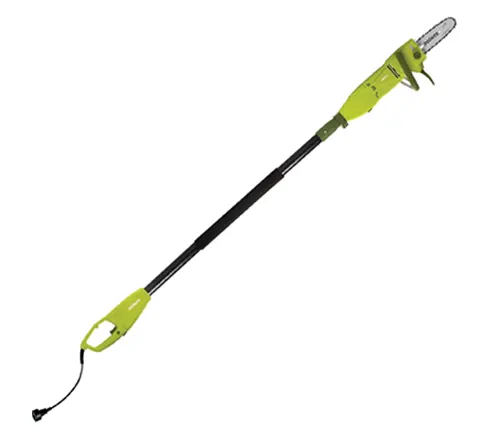
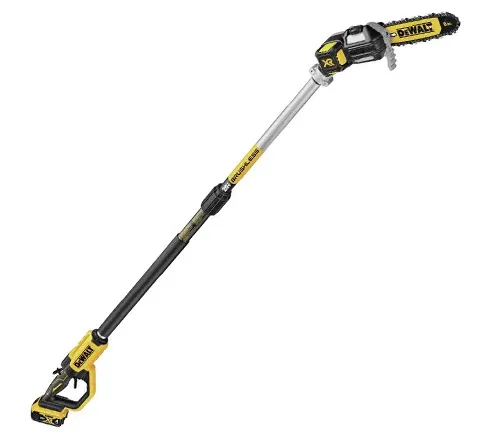
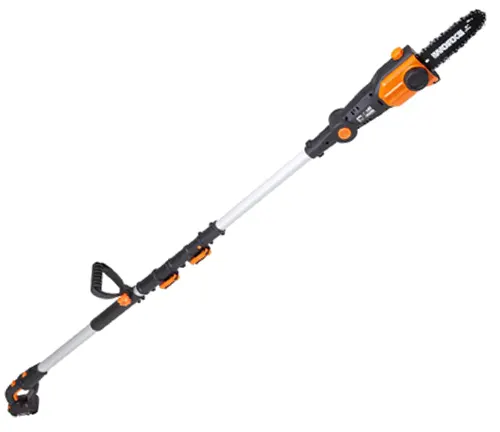
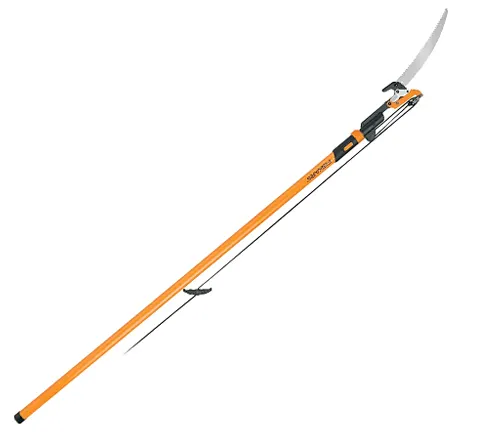
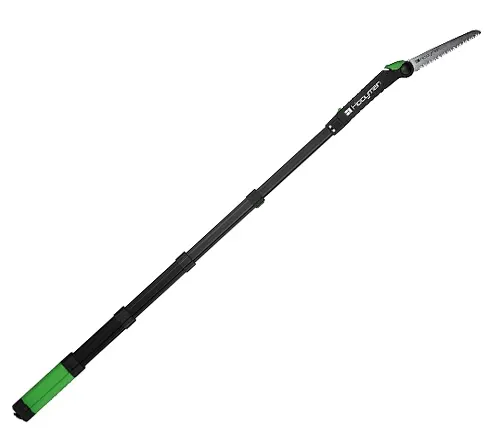












Leave your comment